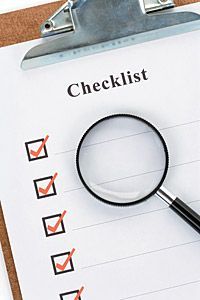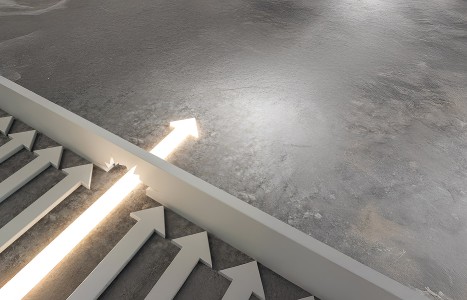You became a chiropractor to serve people, not an insurance company. You deserve to run a business that aligns with your values, supports your family and lights you up. Cash-based care isn’t just a pricing model – it’s a philosophy rooted in freedom, trust and respect for your patients and for yourself. Here's why - and how - to do it.
Treatment Checklist for Plantar Fasciitis, Part 1
Plantar fasciitis (PF) is inflammation of the plantar fascia or arch tendon of the foot. It is an overuse injury causing heel pain which may radiate forward into the foot. Plantar fasciitis can also be known as a heel spur, although they are not strictly the same. The classic signs and symptoms of plantar fasciitis are heel pain under the heel and usually on the inside, at the origin of the attachment of the fascia. Pain is usually worse first thing in the morning. After a few minutes, it eases as the foot gets warmed up, but can get worse again during the day especially if the person is walking a lot. The following is my treatment checklist:
Anti-inflammatory agents. 1) anti-inflammatory creams; rub something with menthol over the PF four times daily; 2) anti-inflammatory diet; 3) supplements: omega-3 fish oils, 2-3 grams daily; glucosamine sulfate, 1,500 mg daily; vitamin C, 1-2 grams daily. I also recommend vitamin E, niacin, calcium, phosphorus, zinc, copper, manganese, and antioxidants.
Orthotics / arch supports. The fascia must be relaxed by dropping the forefoot. A wedge applied to the heel, with the thick end lying anteriorly, may be useful.
Stretching the plantar fascia. Performed in-office and at home. During the acute stages, non-weight-bearing stretching of the dorsiflexors and plantar fascia is advocated, in combination with night splinting. Hyperextension of the metatarsal phalangeal joints while seated appears to isolate the plantar fascia. If non-weight-bearing stretching looks easy and feels easy, progress to standing Achilles tendon stretching with the foot medially rotated and supinated. This position reduces tension on the plantar fascia.

As the condition improves, weight-bearing stretching of the plantarflexors can gradually be introduced with the foot in a neutral position. Plantar fascia stretching may be enhanced by applying ice to the plantar fascia. These stretches should be performed several times per day. Icing the plantar fascia with the calf in the stretched position will further reduce any complaints of the ice causing tightening to the plantar fascia. Stretching can be incorporated with other modalities such as ultrasound, laser, instrument-assisted soft-tissue mobilization, and deep muscle stimulation (see below).
Night splinting. Tightening of the plantar fascia happens in particular over night, which is why pain is often worse in the morning. A plantar fasciitis night splint worn overnight gently stretches the calf muscles and plantar fascia, preventing it from tightening up overnight. There is a lot of good evidence for posterior night splints; if you are not familiar with these, then refer the patient to a podiatrist for a splint.
Cryotherapy. Apply ice 10 minutes at a time multiple times throughout the day and night. It can be applied until symptoms have resolved. You can also apply an anti-inflammatory analgesic cream four times daily.
Other modalities / techniques:
- Laser
- Ultrasound
- Electrical muscle stimulation
- Elastic therapeutic taping techniques can help the foot get the rest it needs by supporting the plantar fascia. Tape is applied in strips across the plantar fascia (anchor at the heel and pull the tape toward the toes), taking the stress off the foot, which allows the inflammation to settle and healing to take place.
- Active release technique (ART)
- Transverse friction massage (TFM)
- Instrument-assisted soft-tissue mobilization
- Deep muscle stimulation (DMS)
Tom Myers explains that the role of the Achilles tendon on the calcaneous is more like a "bridle" on the heel. The soleus muscle that pulls up on the heel is essentially two (incompletely separate) muscles, one pulling on the lateral side of the tendon, the other pulling on the medial side.
In addition to the work you do on the bridle of heel fascia itself, treat the entire superficial back line (be sure to include work on the soleus itself). Lengthen the side that is shortened to even out the bridle: for a pronated foot, work the inside up and more important the outside down as they plantar- and dorsiflex the foot. For a supinated foot where the weight has shifted to the outside of the heel, work the inside soleus down, while you lift the outside up. Getting the heel so that the weight falls through the center will really help you get the forefoot to come back to normal springiness as well.
Rest until it is not painful. Patients may need to take time off (a week or two) from sports or other aggravating activities and do some other form of exercise (e.g., bike riding). It can be very difficult to rest the foot, as most people will be on their feet during the day for work. Walking aggravates the injury and increases inflammation.
Manipulation of the calcaneus may demonstrate a restriction of anterior glide, dorsiflexion, abduction, and inversion. Increasing dorsiflexion at the ankle will help compensate and reduce the necessity for elongation of the plantar fascia. Be diligent in restoring full ankle dorsiflexion and dorsiflexion of the hallux at the metatarsal phalangeal joint.
First ray mobilization and manipulation are essential to ensure complete range of motion and restoration of the windlass effect.
Before getting out of bed in the morning, perform self myofascial release to the bottom of the foot. Sitting at the edge of the bed and rolling a golf ball on the foot works well. Roll the ball from the midfoot to the proximal aspect of the metatarsal phalangeal joints longitudinal to the foot. There are also foot rollers available, which can be used while sitting at a desk. After several sweeps, medial to lateral rolls should be performed along the course of the plantar fascia, followed once again by longitudinal rolls. This brief massage takes 20 to 60 seconds, and should be performed during any prolonged non-weight-bearing period.


